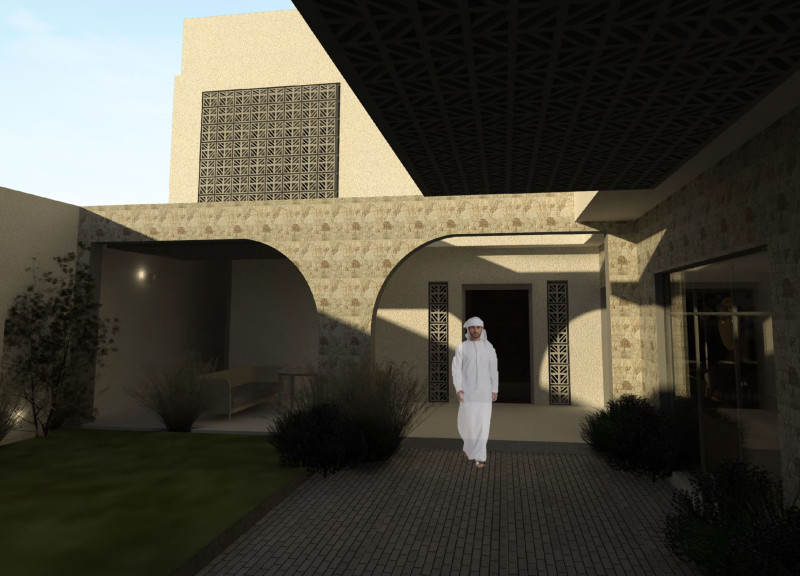5 key facts about this project
At the core of this architectural design is the concept of connectivity. The layout of the project effectively encourages movement and engagement between different areas while maintaining a sense of flow. Key spaces within the building are easily accessible, ensuring that users can transition fluidly from one environment to another. This thoughtfulness in design promotes not just physical mobility, but also social interaction, making it a vibrant hub for various activities.
Materiality plays an essential role in the project, with a careful selection of materials that both enhance the aesthetic and contribute to sustainability. The use of natural materials such as timber and stone seamlessly merges the structure with its surroundings, allowing the building to resonate with its geographical context. Large expanses of glazing not only invite natural light into the interior but also create a visual connection with the landscape outside, encouraging an appreciation for the environment. Subtle textural variations in the materials used lend the project a tactile quality, inviting occupants to engage with the space on a sensory level.
In terms of architectural style, the design leans towards minimalism, focusing on clean lines and uncluttered spaces. This choice not only reflects a modern sensibility but also allows for flexibility in how spaces are utilized over time. For instance, open-plan areas can be adapted for various functions, whether for communal gatherings, workshops, or quiet retreats, depending on the needs of the community. The careful placement of walls and partitions allows for a balance between privacy and openness, which is critical in creating an inviting atmosphere.
Another notable feature of the project is its commitment to sustainability. Energy-efficient systems are integrated throughout the design, from passive heating and cooling strategies to the implementation of renewable energy sources. This dedication to environmental stewardship not only enhances the building’s performance but also serves as an educational tool, demonstrating the potential for responsible architecture in contemporary practice.
The architectural plans reveal a meticulous attention to detail, with each element considered in relation to the overall design narrative. Sections of the building illustrate how spaces interact vertically and horizontally, showcasing the dynamism of the layout. The interplay of light and shadow across various surfaces is designed to evolve throughout the day, enhancing the user experience and adding an element of temporal beauty to the project.
Unique design approaches are evident in the way the project harmonizes with its surroundings. Instead of standing apart as a mere structure, the building acts as a continuation of the landscape, respecting natural flows and existing topography. The architect’s vision to create a structure that is not just functional but also a cohesive part of its environment sets this project apart from conventional designs. The interplay between indoor and outdoor spaces is skillfully treated, with the landscape design complementing the architecture, further blurring the boundaries between built and natural environments.
As one delves deeper into the architectural details—examining the carefully curated architectural designs, plans, and sections—it becomes clear how thoughtful design choices contribute to the project's overall narrative. Visitors are encouraged to explore these architectural representations to gain a fuller understanding of the innovative solutions employed throughout the structure. This comprehensive examination of architectural ideas not only illustrates the project's ambitions but also highlights its place within the broader conversation about contemporary architecture and design. Exploring the project presentation will undoubtedly provide further insights into the complexities and nuances that characterize this exceptional contribution to the field of architecture.


























